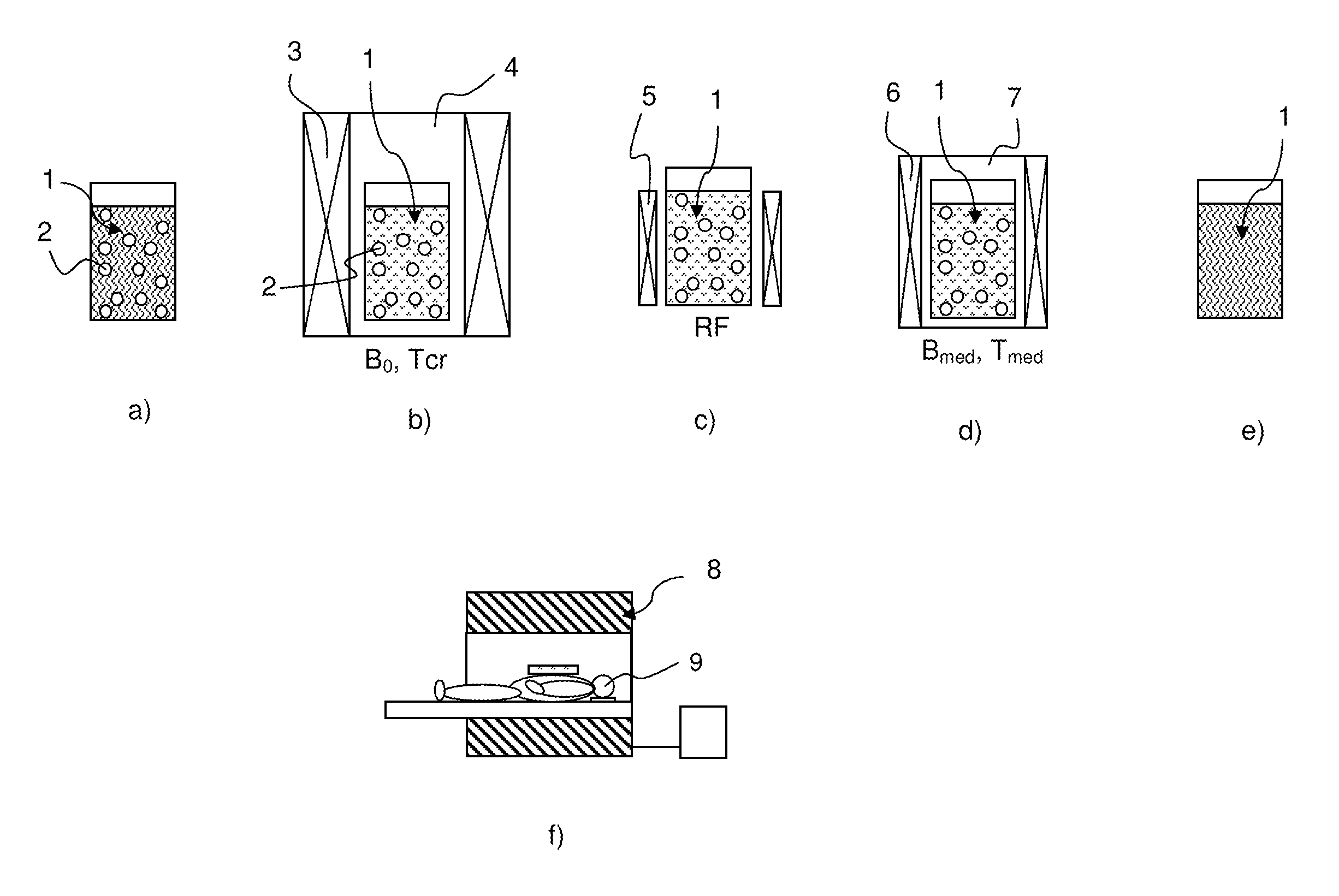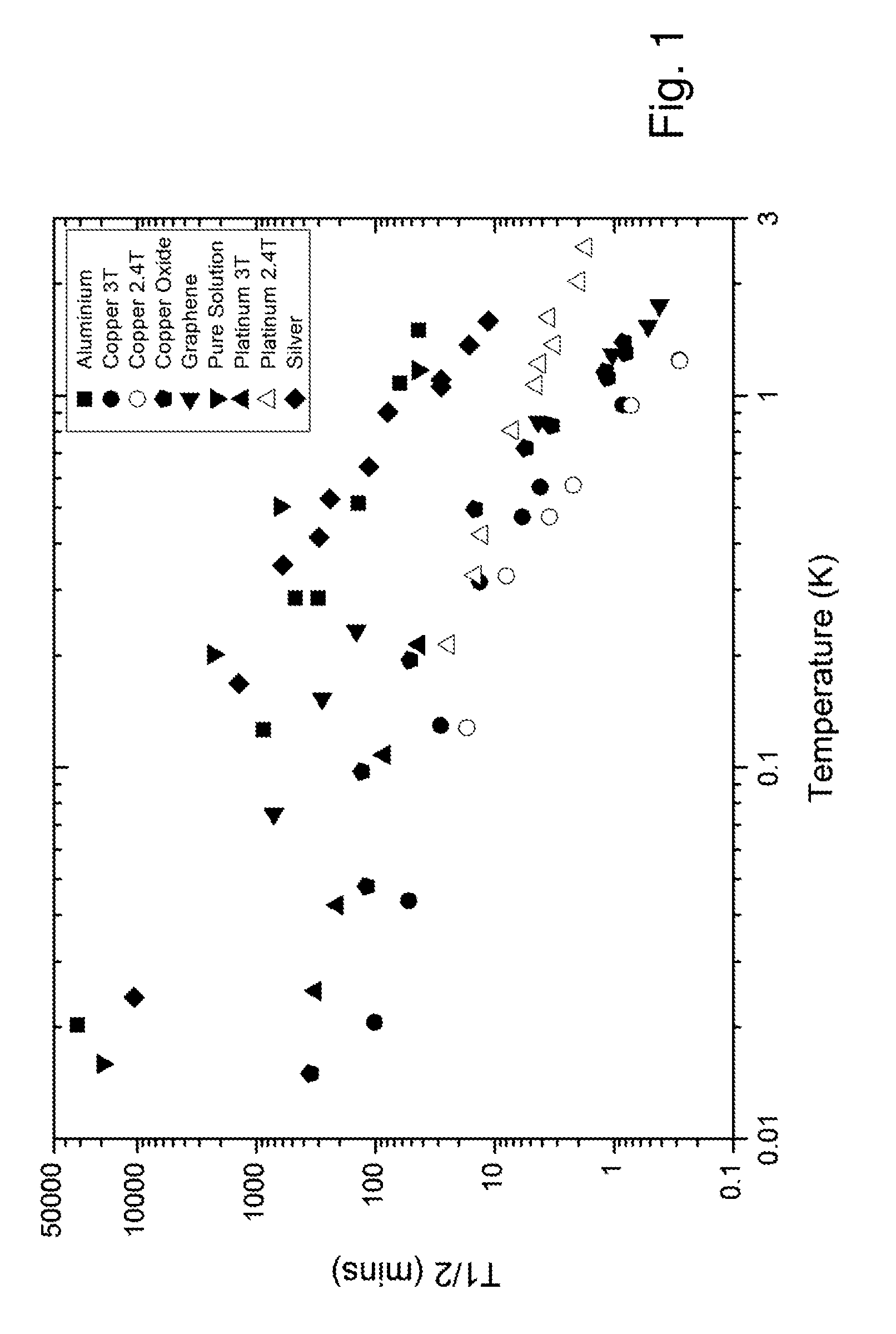Method of hyperpolarization applying brute force using particulate acceleration agents
a technology of acceleration agent and hyperpolarization nucleus, applied in the field of hyperpolarization nucleus, can solve the problems that dissolved relaxation agent cannot, in general, provide conduction electrons, etc., and achieve the effects of enhancing the relaxation process very efficiently, reducing the general polarization build-up time, and favourable temperature and field dependence in their relaxivity
- Summary
- Abstract
- Description
- Claims
- Application Information
AI Technical Summary
Benefits of technology
Problems solved by technology
Method used
Image
Examples
Embodiment Construction
[0050]Overview Over the Invention
[0051]The invention relates to a (nano-)particle-enhanced brute-force polarization of nuclear spins. Nuclear magnetic resonance (NMR) techniques are extensively used in many areas of basic and clinical research, as well as in diagnostic medicine, and in other fields such as analytical chemistry. However, compared with many other technologies, including those using radioisotopes, NMR is insensitive in the sense that large amounts of material are needed in order to obtain detectable signals. This imposes constraints, for example, on the clinical utility of magnetic resonance spectroscopy. The sensitivity of NMR is poor because the net polarization of the nuclear spins is typically only ˜1 part in 104-106, and so signal is detected from a correspondingly small percentage of nuclei. In accordance with the invention, exposure of a sample to very low temperatures and high magnetic fields, in conjunction with (nano-)particle-mediated relaxation enhancement,...
PUM
 Login to View More
Login to View More Abstract
Description
Claims
Application Information
 Login to View More
Login to View More - R&D
- Intellectual Property
- Life Sciences
- Materials
- Tech Scout
- Unparalleled Data Quality
- Higher Quality Content
- 60% Fewer Hallucinations
Browse by: Latest US Patents, China's latest patents, Technical Efficacy Thesaurus, Application Domain, Technology Topic, Popular Technical Reports.
© 2025 PatSnap. All rights reserved.Legal|Privacy policy|Modern Slavery Act Transparency Statement|Sitemap|About US| Contact US: help@patsnap.com



